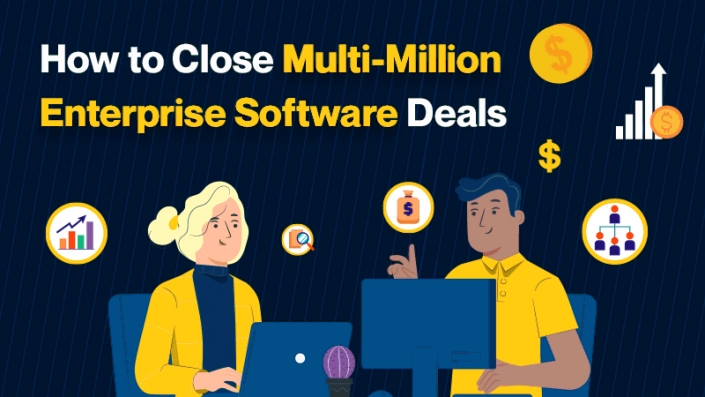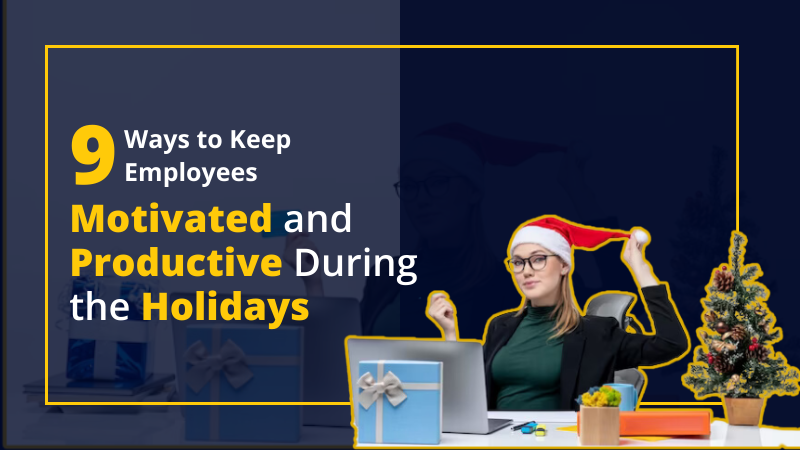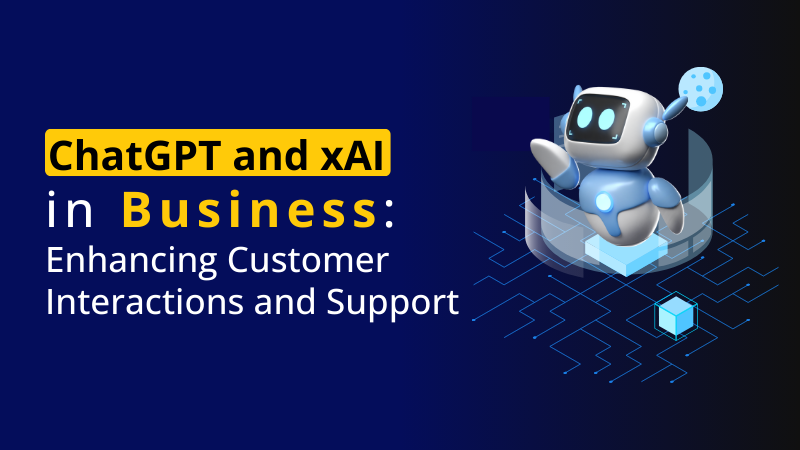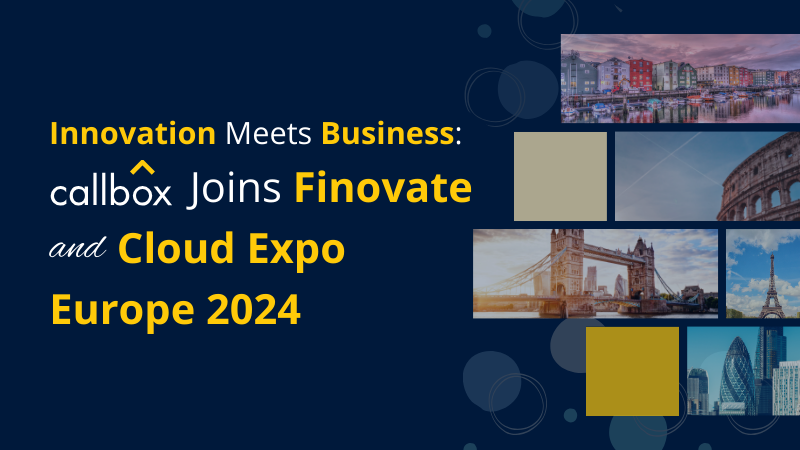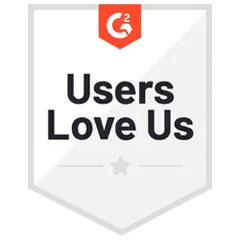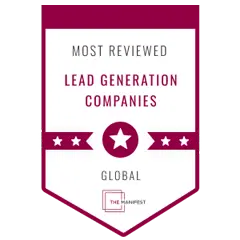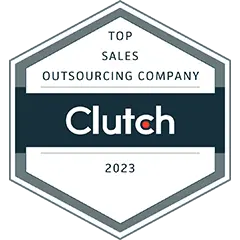There are three things to consider when you’re about to SaaS out an Enterprise. One, the sales cycle is a long process of negotiations and bureaucracy. Two, you’ll be facing off with a committee of decision-makers with ambiguous authority and various motivations. Three, staring straight into the sun without flinching is easier than prospecting without an inside contact.
So, ready to wade into deep Fortune-500-infested waters? I say that but, in reality, enterprise-sized companies are not just made up of F500 accounts (although they are right there at the top). Generally, organizations with more than 250 employees and $50 million in annual revenue are considered enterprises. This means that while the deal sizes may vary, the contracts are all larger and longer in duration than those you would get from Small And Midsize Business (SMB) deals.
Okay, ready to dive in?
Actionable Enterprise Sales Tips
Let’s start with…. Prospecting!
I bet you’re thinking, “Oh boy, here we go.”
I’ve discovered that it’s not just me. In fact, a lot of people don’t enjoy prospecting. The few who do are savvy sellers who enjoy the thrill of a whale hunt. Emails are a little easier but there is always that feeling of dread before you pick up the phone to make those cold calls. You know more than anyone that they won’t start spinning without that initial momentum. So, really… What is holding you back?
I get you. That’s why I’m giving you the real talk here. There is no such thing as a perfect sales model or a sales hack for enterprise selling. Your prospect knows the game, possibly better than you. I find that, even years later, I’m still trying to shake off the feeling that I am intruding, and that I am going to be rejected.
The simplest solution is: just do it. A smart manager once said, “It’s prospecting not alchemy.” You’re there to create conversations that look for opportunities, we can’t turn everything into gold.
It’s prospecting not alchemy
Although, it does pay to have a great knowledge base. Nothing is more mortifying than to have a prospect turn a question around you and your mind suddenly blanks.
The Enterprise Sales Process
The sales process is about breaking the ICE. We begin with Initial contact, then create the Conversation, and finally the Explanation. I didn’t come up with it! I did think that it would be really awesome to share Mike Halper’s ideas with you. There are four key points for each part of the sales process: format, goals, structure, and questions. The elements listed on each key point are pretty self-explanatory as you can see below.
Initial Contact
| Format | Goals | Structure | Questions |
| – Cold calls – Cold emails – Networking – Inbound calls – Inbound emails – Website chat | – Pre-qualify – Build interest in talking – Close for conversation | – 2-5 minutes – 80% on prospect – 20% on you | – Pain point – Current state |
Conversation
| Format | Goals | Structure | Questions |
| – Appointment – Online meeting – Face-to-face meeting – Extended cold call – Meet at an event | – Qualify – Gather prospect info – Build interest – Close for explanation | – 10 to 60 minutes – 50% on prospect – 50% on you | – Pain point – Current state – Desired state – Organization – Qualifying |
Explanation
| Format | Goals | Structure | Questions |
| – Presentation – Demonstration – Proposal – Quotation – List of options | – Qualify – Build interest in a product – Close for purchase | – 30 minutes to 2 hours – 20% on prospect – 80% on you | – Pain point – Current state – Desired state – Organization – Qualifying – Closing |
How To Deliver Value
This is the most important question, and most likely why you’re still reading up to this point. Fundamentally, once you identify the customer’s pain point, it’s a matter of delivering the solution and the benefits. That’s the easiest and most logical conclusion.
What about after? Will your solution create value realization? Don’t worry, we’ll start with the basics and go from there.
Step 1: Understand Their Pain & Provide Value
There are three layers of pain and the effect cascades down to the other layers. What started as a technical pain will affect the business, when the business suffers, the individuals suffer. By providing value to counteract each pain point from the top, successful outcomes will flow quite easily.
| Technical | Pain Point | Value Point |
| – Processes – Platforms and Systems – People | – Tasks are manual and time-consuming – Things are not working well – It takes too much time and effort to do something – Current processes are difficult – It’s difficult to see what’s going on and access information – Connectivity or communication is difficult – Performance of systems, processes, or people is not what it needs to be – Reliability of systems, processes, or people is not what it needs to be | – Automate manual tasks – Make something work better – Decrease the amount of time or effort required to do something – Make something easier – Increase visibility or access to information – Improve communications or connectivity – Improve the performance of systems, processes, or people – Improve the reliability of systems, processes, or people |
| Business | Pain Point | Value Point |
| – Revenue – Costs – Delivery of Services | – Difficult to find ways to increase revenue, market share, profitability, etc. – Difficult to close sales and leads – Conversion rates are not what they need to be – Decision-making process is slow and not as good as it needs to be – Difficult to decrease the cost of goods sold, inventory costs, labor costs, etc. – Long product delivery time – Poor product or service quality – Customer satisfaction is not what it needs to be – Customer retention is not what it needs to be | – Improve revenue, market share, close rate, conversion rate, profitability, etc. – Decrease the cost of goods sold, inventory costs, labor costs, etc. – Decrease risk – Improve decision-making – Decrease product delivery time – Improve the delivery of services – Improve product quality – Improve customer satisfaction – Increase customer retention |
| Personal | Pain Point | Value Point |
| – Income – Career – Work – Environment | – Not making enough income, bonuses, commissions, etc. – Lack of financial strength – Need to get promoted or advance career – Not getting enough recognition – Working too much or too much of a workload – Job is extremely stressful and chaotic – Not a good work/life balance – Not happy | – Increase personal income, bonuses, commissions, etc. – Decrease personal expenses – Create opportunities for career advancement – Increase recognition for performance – Decrease workload – Decrease stress level – Increase level of happiness – Improve work/life balance – Improve personal relationships |
Step 2: Create Business Conversations & Extract Information
By using the key points in the tables above, you will be able to create a conversation with your prospects and customers. This will also serve as a basis to ask your pain questions and identify the current state of their business.
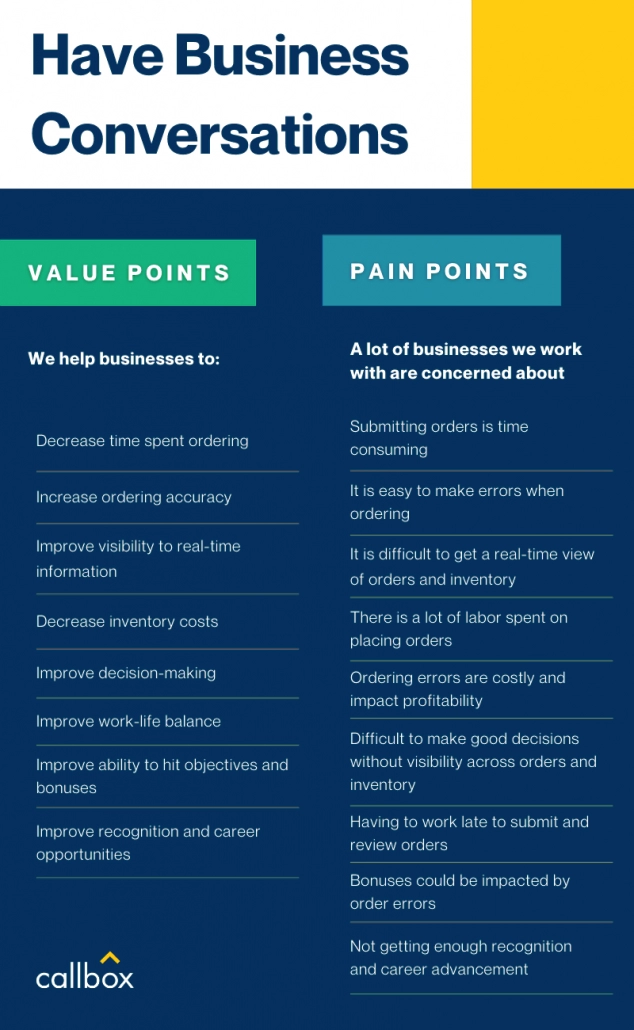
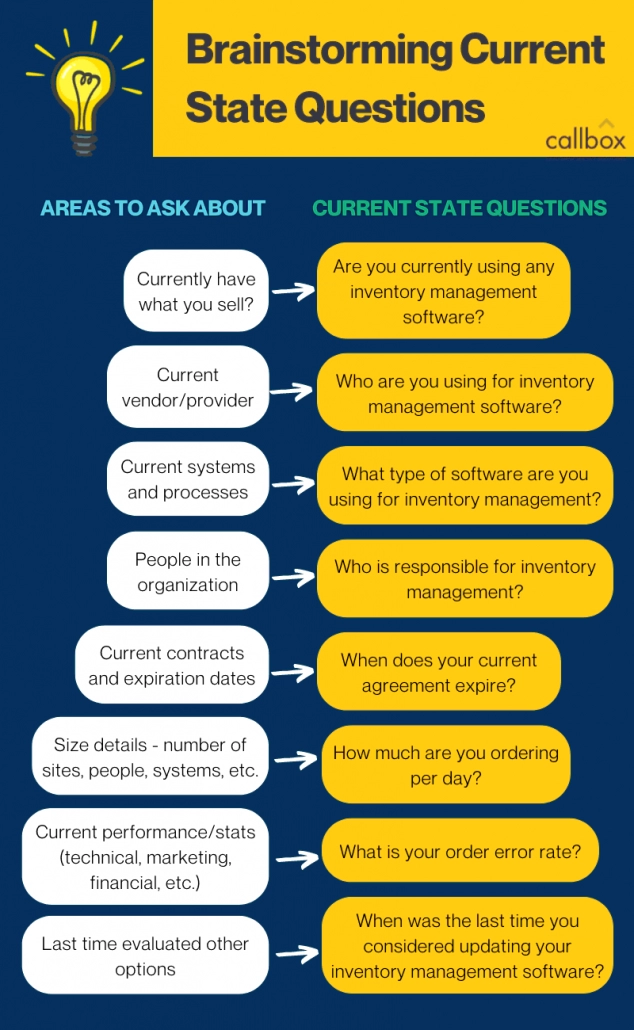
Step 3: Provide A Solid Partnership Plan
When it comes to enterprise accounts, the sales process just doesn’t end after you close the deal. In fact, customer success plays a crucial role in the sales cycle which I will expound on later. It’s important to work with your partners on how goals can be met and demonstrate development commitment by way of the Partner Planning Process.
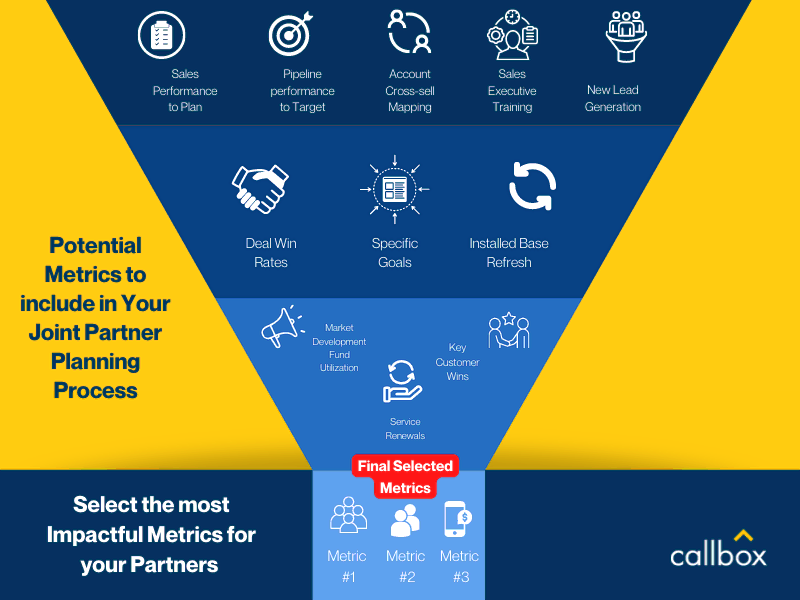
Keep in mind that enterprise partners may not have time for frequent meetings and you are just one of the many vendors touching base with. Using the planning process plan, you should be able to create a simple and achievable roadmap on how to meet your goals together.
Enterprise Tech Sales: Customer Expectations
People are resilient. Business-driven ones, even more. After each disruption, we have seen how the business world adapts, overcomes, and evolves faster than ever before. In fact, Harvard Business Review surveyed that 63% of the F500 CEOs stated they would accelerate their technological investment despite financial pressures.
This is why the rapid rate of digital transformations for the past few years has created a radical shift in customers’ technology needs and expectations. As someone from B2B sales, there are two demands an enterprise customer will ask of you; Expertise and Simplicity.
Expert Guidance
Enterprise Sales Reps and Account Executives (AE) are expected to be more tech-savvy, have deeper industry knowledge, and be expected to provide constant and continuous value throughout the sales process.
- Expertise from selling products to enabling transformations
Enterprise customers want to be ensured that you would have best practices on how you would be able to provide solutions before investing in the actual solution. There is also a high expectation to provide ongoing guidance and collaboration to attain desired results. That means tech sellers can be account managers with industry knowledge and the leadership capabilities to lead a cross-functional sales team. - Expertise in making every seller a marketer
The collaboration between sales and marketing to evaluate intent based on customer interaction can guarantee that more deals are landed. For one, marketing know-how and studying buyer personas can enable sellers to provide personalized emails and proposals to those who are keen on more information. To fully utilize personalization, the seller must also become a marketer. - Expertise in a diverse partner ecosystem
New channel partners specializing in cloud, cybersecurity, and DevOps (software development and IT operations) will enrich the ecosystem by adding expertise in helping enterprise customers adopt new solutions. Unlike the conventional value-added resellers, these new channel partners can go from co-creation to co-selling to co-delivery and even sometimes provide value realization! - Expertise in leveraging customer success for growth
There is an increase in the number of stakeholders and diversity in technological decisions that come with accelerated digital transformation. According to a survey by McKinsey (see figure below), “As the number of stakeholders involved in technology purchase decisions rises, influencers are significantly less satisfied than buyers.” The role of Customer Success has become more critical than ever. They would be able to provide sales teams with insights into customers’ needs.
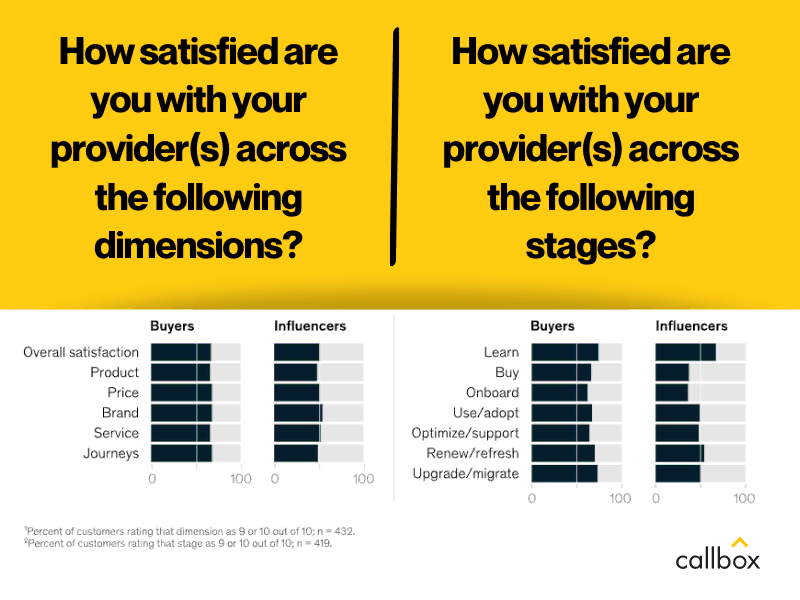
Simple User Experience
As we are now shifting towards Industry 5.0, customer culture has begun to favor self-service. That is why they crave simpler and personalized user experiences. Straightforward cloud-based solutions have become the ideal buying model for B2B customers.
- Simplicity in digital and product-led models
Software services and products that are easy to try, buy and use will see an increase in sales. However, even sellers with complex solutions adapt a product-led model with freemiums, demos, and simple deployment processes that can generate a demand for their products and delight more customers. - Simplicity in making every marketer a seller
There is a way to scale personalization. Marketers would need to capitalize on digital solutions for themselves by using predictive AI, automation, and integrated data to bring in potential customers. To make a marketer a seller, they can utilize self-serving tools and hybrid events for their marketing campaigns. Examples of this include Google Cloud’s pricing calculator, and IBM’s hybrid cloud value calculator. - Simplicity in the growth of B2B marketplaces, agencies, and digital direct models
B2B companies have found it simpler to utilize digital channels instead of traditional transactional types. It is also more cost-effective to use hosting providers that can provide dedicated and cloud servers instead of building and maintaining infrastructure in-house. The effect of this is the rapid growth and availability of Hyperscale cloud marketplaces. - Simplicity in user-driven experiences
As I’ve mentioned before, customers prefer to take control of their buying experience. This is why tech companies that have transformed their customer journeys to a seamless and frictionless experience have seen an increase in revenue and customer success.
Connecting with Decision-makers
The buying committee is generally at the C-suite or executive level. But you may often find yourself assigned a main point of contact with no buying power. Instead, they have the power to influence decision-makers. They could be your ally or they could be your blocker. Before we can identify the persons we should win over, let’s first review the decision-making structure of a typical enterprise business.
How Decisions are Made
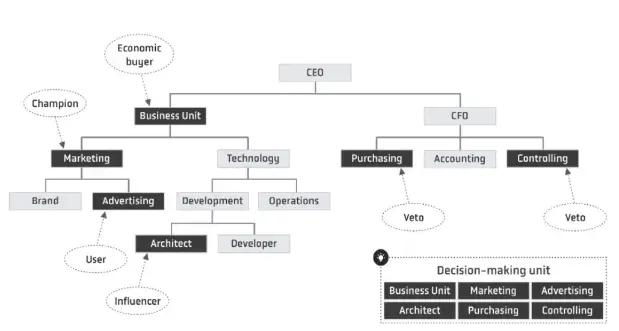
Identifying the persons behind the decision process can help you optimize your sales strategies and shrink loooong sales cycles. Depending on the organizational structure (see figure above), the decision-makers can be any of the following:
| Sole Decision-maker | Board-approved Decision-maker | The Committee |
| There could only be one… if you’re lucky. The sole decider is usually the CEO, president, or division president. Sometimes a project director or a department head may be granted discretionary buying power. | Another type of decision-maker is one that needs board approval first. In compliance-heavy organizations, you’ll have to wait through several board meetings before there is final approval. | A decision cannot be made without a group consensus. The final decision is usually made by one person but it is a team effort to help them come to the best decision for their organization. |
The Enterprise Persona
Gartner came up with a really cool thing called the Enterprise Personas which should not be mistaken for Buyer Personas. It’s actually somewhat similar to the Ideal Customer Profile except it’s tailored towards an enterprise-sized business where consensus decision-making rules apply. An enterprise persona can provide context for your
- Product Strategy
- Contract Terms
- Marketing Plans
- Qualification
- Prioritization
- Customer Success Approaches
Although this persona includes segmentation elements like firmographics, it is not for any actual segmentation. Instead, segmentation happens when you can identify the key areas to help build your buyer persona.
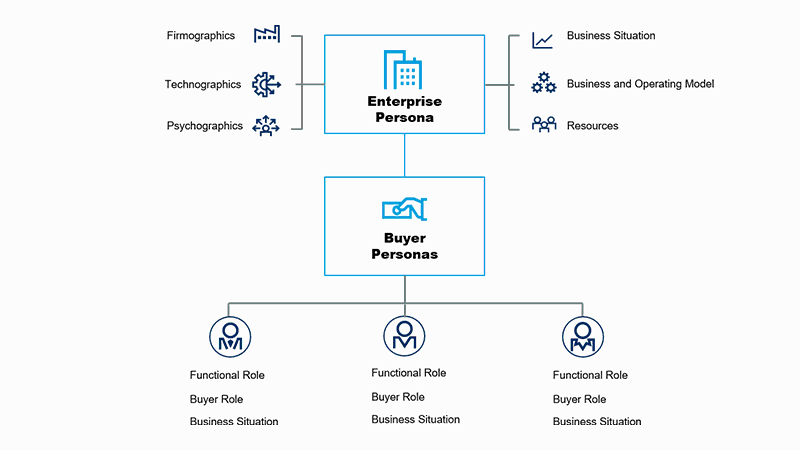
- Firmographics: Size, industry, and location.
- Business Situation: Are you better for a business with accelerated growth or a steady, cost-effective one? What regulations are they following? What are their competitive pressures?
- Technographics: What is their technology landscape? Does it need replacement or upgrades? Are they seeking new tech opportunities? Does a single vendor dominate its technology stack?
- Business and Operating Model: What is their operating model? Their organizational structure? Who drives organizational action? What are their company values?
- Psychographics: What area drives the technology agenda? How do they approach planning and budgeting? What is the buying team composition?
- Resources: What are their resources? How can you contribute and add value to their current infrastructure?
Identifying the Buyer Roles
Sole decision-makers without influencers are atypical for enterprises, and they rarely happen. What you are typically facing are multiple players in the meeting room, usually more than five, and with very different buying roles. By using the buyer roles as baselines to prepare your answers and materials, you’ll come out of each meeting a winner!
- The Champion
A referral or someone who recommended your product/services. Their influence depends on their seniority. They are your best allies. - The Power User
The person using your product/service. Also known as the end user. They may or may not be C-level but their reviews could make or break you. - The Techie
Is literally the tech guy. They will make sure your product/service works with the infrastructure or if it can be customized to do so. You must conform to them instead of the other way around. - The Security Guard
They are there to protect the client’s interest especially if your solution is going to be touching sensitive and confidential data, and/or require company network access. - The Negotiator
You’re going to be going back and forth with them a lot on rates and contract terms. They’ll be expecting something off the top in exchange for the logo. - The Lawyer
They usually come in a group and will accompany the Negotiator. Get straight to the point because they’re billing by the hour. - The Corporate Stickler
They follow the corporate rulebook and understand supplier diversity, purchasing, bidding, and RFPs (Request For Proposals). They’ll be making sure everyone’s on the up on up to the rules and regulations. - The Budget Holder
Is several levels higher than the Power User. They own the budget and will pay for the solution. - The Random Influencer
Why are they here? You’ll never know for sure. They are most likely junior-level employees who are asked to research options before the Decider is briefed. - The Decider
They may or may not be the same as the Budget Holder. They’ll listen to everyone’s opinions before approving or denying anything.
Getting Through Procurement
The decider has decided! Heck yes! Does that mean the deal is closed and won? Not yet. You’ve only moved on from the line-of-business employees onto the procurement process. There are going to be people who will scrutinize and question every fine print. They are there to make sure proper procedures are followed and company supplier guidelines are adhered to.
Procurement is usually one of the reasons the sales process takes so long. That means you should bring in a business or customer success manager who will continually communicate with the procurement team to ensure that every requirement is met. If done right, procurement can become your biggest champion.
Marketing Elements That Drive Sales Decisions
It comes as no surprise that marketing software to enterprise customers has a different take than to a regular B2B customer. Your usual marketing and sales tools? The email marketing, and the social media campaigns? They may not work in context considering the high price point, tailoring your campaigns to several audiences of decision-makers at once, the enterprise level being niche, the purchase process being long and Byzantine, and the software product/service itself being complex.
Marketing an enterprise product has to go through several stages of customization and integrations optimized to a self-service user experience because nobody wants to talk to a salesperson until they’re at least 80% sure they want to buy. You should use the right tools and platforms such as LinkedIn and understand how to best approach your target audience by identifying the correct enterprise marketing elements.
- A defined audience
Personalize your messaging specific to them and their industry to great effect especially by utilizing the enterprise persona. - Creative excellence
This specific audience has heard it all before. Don’t just come up with a “great” pitch. Create something original and credible. - High-quality content
When I say high quality, I don’t just mean being witty. Your content has to be well-researched and persuasive. If you are not a Subject Matter Expert (SME) then get ideas from expert resources. Don’t just copy + paste something and call it a day. - Smart promotion
There is no point in having great content if your audience won’t see it. Leverage your SEO tools, use ads, and even other paid marketing tools. Sometimes you got to pay to cut in line. - Tactical measurement
Always track your metrics. Finding out what works and doesn’t can help you optimize your strategies for better results.
Don’t just copy + paste something and call it a day
The Critical Role of Customer Success
Put yourself in your customers’ shoes. Would you buy from a vendor that promises you a customer success manager (CSM) or a vendor who takes that CSM along for the whole sales process? That very same CSM who understands the detailed scope of work and has the experience of professionals who will integrate the system and train your staff along with it?
The answer’s pretty obvious.
Of course, it is a given that the CSM will take the reins after the product goes live. However, introducing them along with your team during the sales process and deployment can guarantee continuity in Customer Lifetime Value and Gross Retention. They can ensure that your customers get what they pay for while also helping your business sustainably foster your customer base for upsell opportunities.
Final Thoughts: How To Win An Enterprise Account
The reality is that the more enterprise company logos you collect, the easier it is to acquire new sales. Your social proof is the reason why these huge account holders would be willing to hear you out. Ultimately though, it will depend on whether or not your solution is enterprise-ready or able to support big companies. This is a challenge for startups and why it is critical to build connections and overdeliver on customer promises. Be prepared, be audacious and deliver.
Godspeed!

